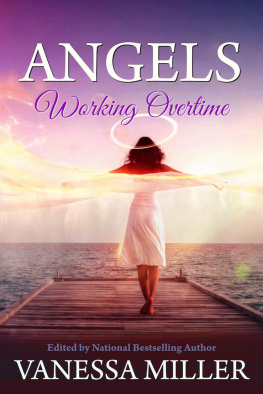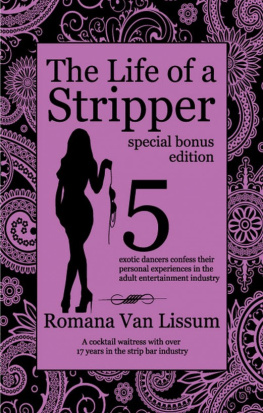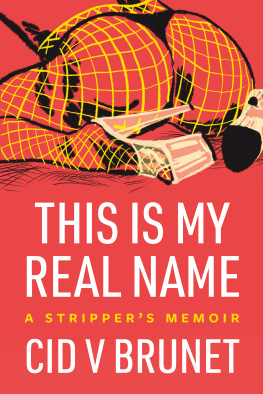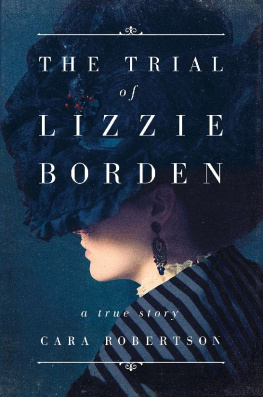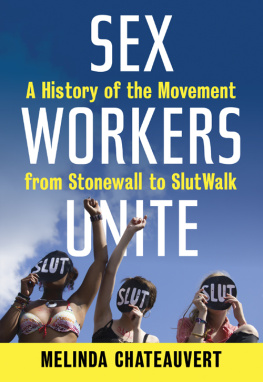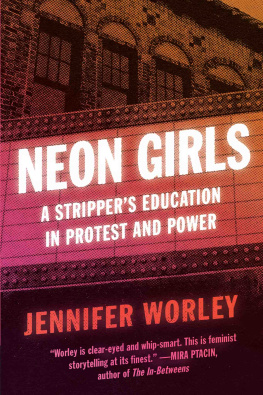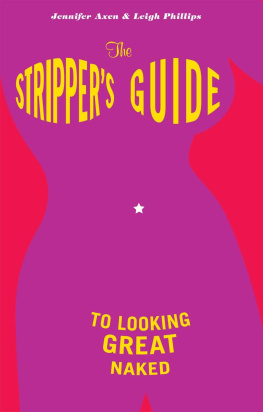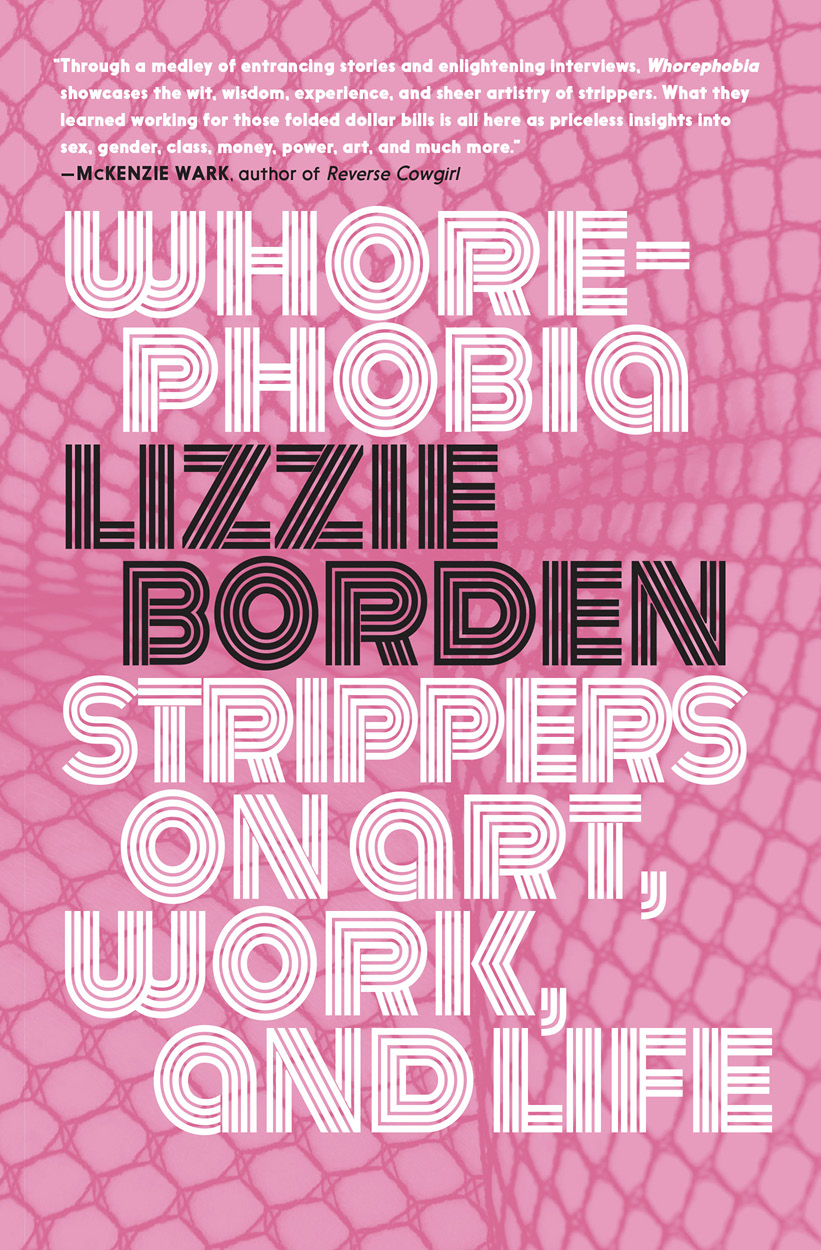WHOREPHOBIA
Strippers on Art, Work, and Life
Edited by Lizzie Borden

seven stories press
new york oakland london
Copyright Lizzie Borden, 2022
All rights reserved. No part of this book may be reproduced, stored in a retrieval system, or transmitted in any form or by any means, including mechanical, electronic, photocopying, recording, or otherwise, without the prior written permission of the publisher.
Seven Stories Press
140 Watts Street
New York, NY 10013
www.sevenstories.com
College professors and high school and middle school teachers may order free examination copies of Seven Stories Press titles. Visit .
Library of Congress Cataloging-in-Publication Data
Names: Borden, Lizzie, 1958- editor.
Title: Whorephobia : strippers on art, work, and life / edited by Lizzie
Borden.
Description: New York : Seven Stories Press, [2022] | Includes
bibliographical references.
Identifiers: LCCN 2022009342 | ISBN 9781644212271 (trade paperback) | ISBN
9781644212288 (ebook)
Subjects: LCSH: Sex-oriented businesses--United States. |
Stripteasers--United States--Case studies. | Prostitution--United
States. | Sex--United States.
Classification: LCC HQ144 .W5438 2022 | DDC 306.70973--dc23/eng/20220404
LC record available at https://lccn.loc.gov/2022009342
Printed in the United States of America.
987654321
CONTENTS
COOKIE MUELLER
kathy acker
JO WELDON
SUSAN MCMULLEN
MAGGIE ESTEP
CHRIS KRAUS
JODI SH. DOFF
TERESE PAMPELLONNE
JILL MORLEY
SUSAN WALSH
DEBI KELLY VAN CLEAVE
ELISSA WALD
ESSENCE REVEALED
SASSY PENNY
JACQ FRANCES
REESE PIPER
LINDSAY BYRON
THE INCREDIBLE, EDIBLE AKYNOS
ANTONIA CRANE
LILY BURANA
AM DAVIES
KAYLA TANGE
SELENA THE STRIPPER
PREFACE
Lizzie Borden
In the late 1970s and early 80s in downtown New York, my friends and I hung out in funky bar/strip clubs like the Baby Doll and the Pussycat Lounge to watch our friend Cookie Mueller go-go dance. Cookie, the inimitable John Waters actress and writer, supported herself and her son largely on Social Security checks, an occasional film part, and columns for downtown magazines. Go-go dancing was just one more piece of the jigsaw puzzle of her survival.
I was a filmmaker at the time. Downtownmeaning anything below Twenty-Third Streetwas where those of us seeking to escape traditional, often middle-class backgrounds came to make art. We were the first gentrifiers of raw, industrial loft spaces that had once housed turn-of-the-century sweatshops. In this scene, sex was everywhere: We saw nude performances by dancers and theater performers in galleries and art spaces. We took the subway to Times Square to sneak into tip-and-touch places. Wed seen all of Fellini, and we revered Sam Fullers film The Naked Kiss . We scoffed at Vegas showgirls with their perfect, androids bodies. But despite the ubiquity of sex in the citys artistic and commercial life at the time, Id always been mystified by what went on in the strip clubs that seemed to populate every street, male bastions advertised by neon signs. Who were the strippers who worked in them? What were they expected to do? And what made them want to do it?
So, I was in awe of Cookie and the other downtown writers, painters, and musicians who performed at the clubs in their thrift-store costumes, platform shoes, layers of eyelashes, and tons of glitter, alongside plenty of working-class dancers from the outer boroughs. They were as far from Vegas showgirls or Fellini vixens as one could imagine. The ironic casualness with which they vamped to popular songs in their underwear, using a pole only to keep their balance, changed my concept of who strippers could be.
Their comfort eased my own leap into a world of paid sex.
Id been working on a film for several years by then, editing eight hours a day and shooting whenever I had a few hundred dollars. At some point, I learned that a few of my closest artist friends worked for a madam in a small brothel. My best friend dared me to do it with her; she told me it could be a way to afford to keep my film going. This kind of working was like Cookies go-goingnothing like the media stereotypes of street-based hookers or high-class call girls. Whatever our job, and whoever the client, we were riffraff, wearing what we could glean from our closets in order to meet the madams requirements. (Dress as if youve just had lunch with your in-laws and are on your way to meet your boyfriend.) We were solving our own jigsaw puzzles so we could make our art.
My way of justifying working at the brothel was to tell myself it was part of what I considered my real work of writing and directing, so I always went to work armed with a tape recorder. After a few months, I had enough material for a scriptand had received a grant for the film Id been working onand I quit the brothel. My friends eventually quit, too; we were privileged by our middle-class position to leave when we wished. Among us was a shared secret.
What we didnt share was the bravado of the go-go girls, onstage for everyone to see. On the street, when we encountered one another after years of being out of contact, wed exchange cautious looks coded with reminders of our decades-long agreement: we wouldnt out one another about the brothel. Our camaraderie shrank under the suspicious pressure to deny the past, a pressure I now understand to be the result of our internalized societal whorephobia.
That term, whorephobia which, back then, had yet to be coineddescribes this shame perfectly.
***
My feature film Working Girls , about a day in the life of a group of women working in a brothel, was released in 1986. My cover storyexcept to the sex workers I befriendedwas that my film was about a friend.
As part of the promotional campaign, I had the opportunity to meet even more incredibly dynamic women who worked in the sex industry when my producers and I assembled several panels featuring sex workers and activists for discussions after screenings. In San Francisco, I met Margo St. James, a founder of the group COYOTE (Call Out Your Old Tired Ethics), who advocated for the decriminalization of prostitution; Carol Leigh, the poet/writer/activist who coined the term sex worker ; strippers from the pre-unionized female-centric strip club the Lusty Lady; and Susie Bright, cofounder and editor of the first woman-produced sex magazine, On Our Backs . In Los Angeles, I spoke with ex-cop turned sex worker and activist Norma Jean Almodovar, author of the bestselling book Cop to Call Girl . In New York, I had the pleasure of interviewing writer and spokeswoman for PONY (Prostitutes Of New York) Tracy Quan; porn actor and educator Veronica Vera; pioneering porn film director Candida Royalle; and porn provocateur and artist Annie Sprinkle, whose cutting-edge performances included inserting a speculum to allow audience members to view her cervix. Later, I visited professional dominatrix (prodomme) Terence Sellerss leather-walled dungeon.
All these encounters opened my eyes to the variety of jobs included in the world of sex work and the differing interests, desires, and needs of those who performed them. For example, escort Tracy Quan would never want to perform on a stage, but some strippers I knew might cross the line into seeing a regular client privately. Activist and self-proclaimed whore Carol Leigh was out and loud, but prodomme Terence Sellers operated in ultra-coded secrecy. Even so, we were all united against the exclusionary politics of radical feminist antiporn activists like Andrea Dworkin and Catharine MacKinnon, both early SWERFs, or sex workerexclusionary radical feminists, who argued that sex work was inherently degrading and oppressive. We all supported the decriminalization of sex work.


